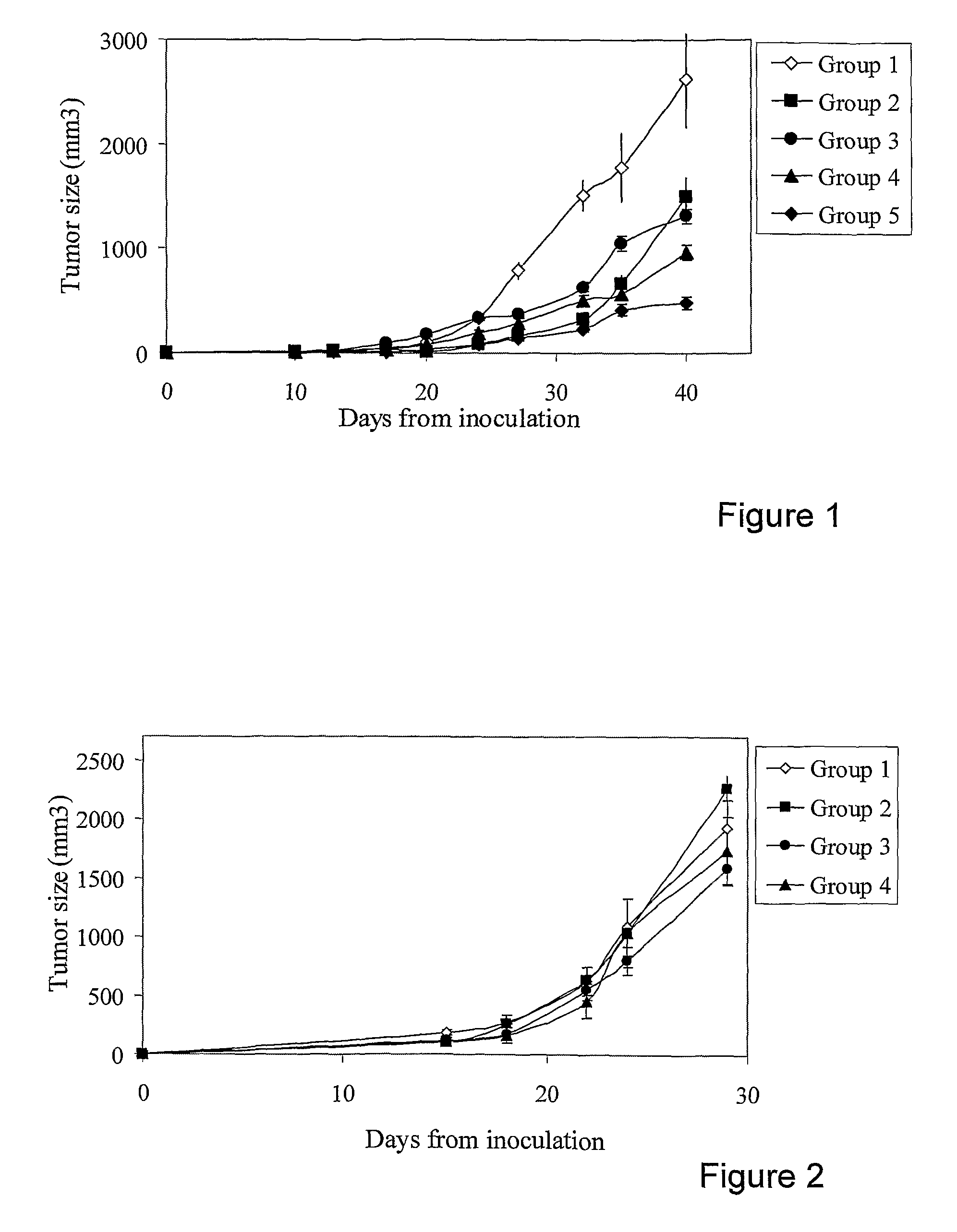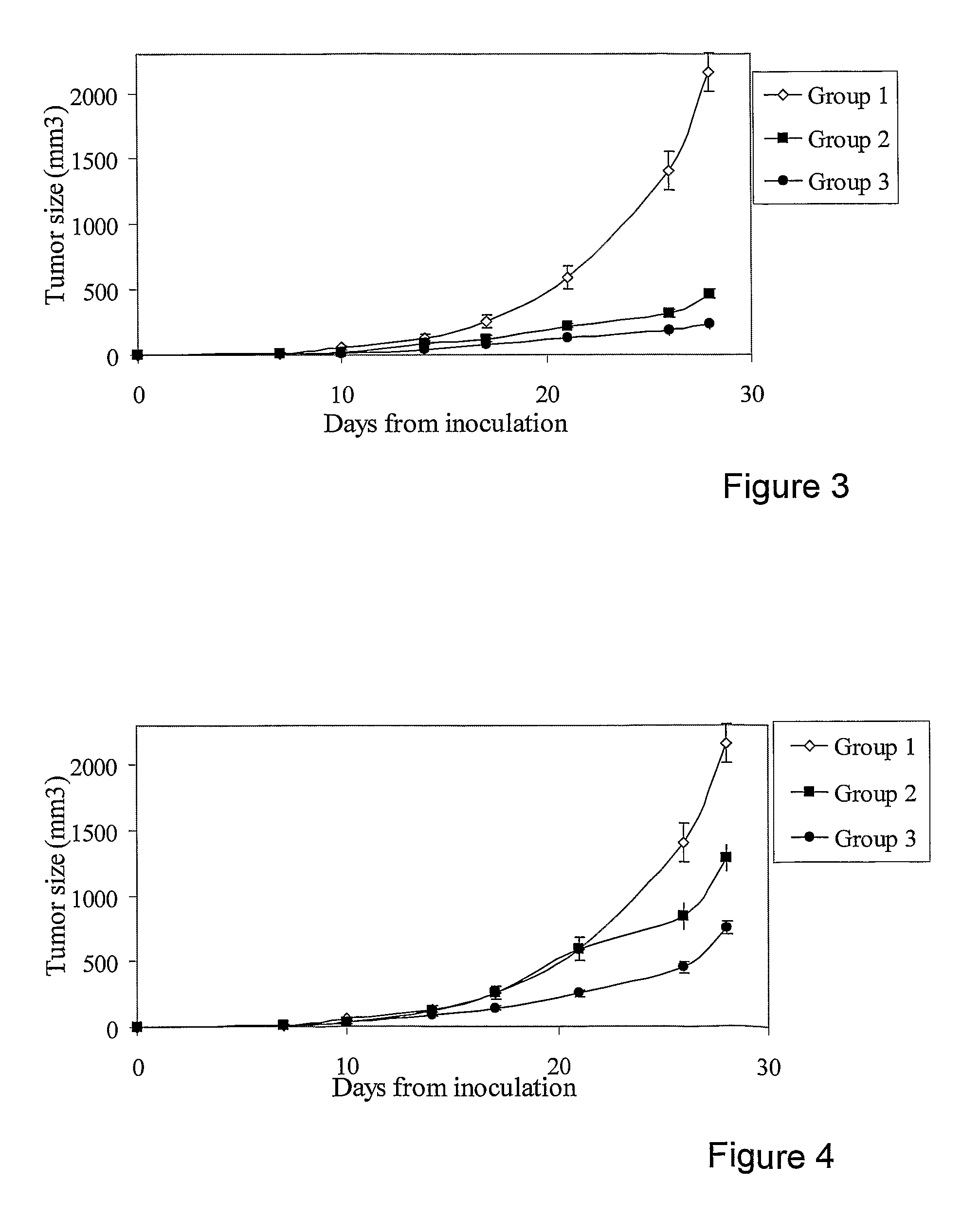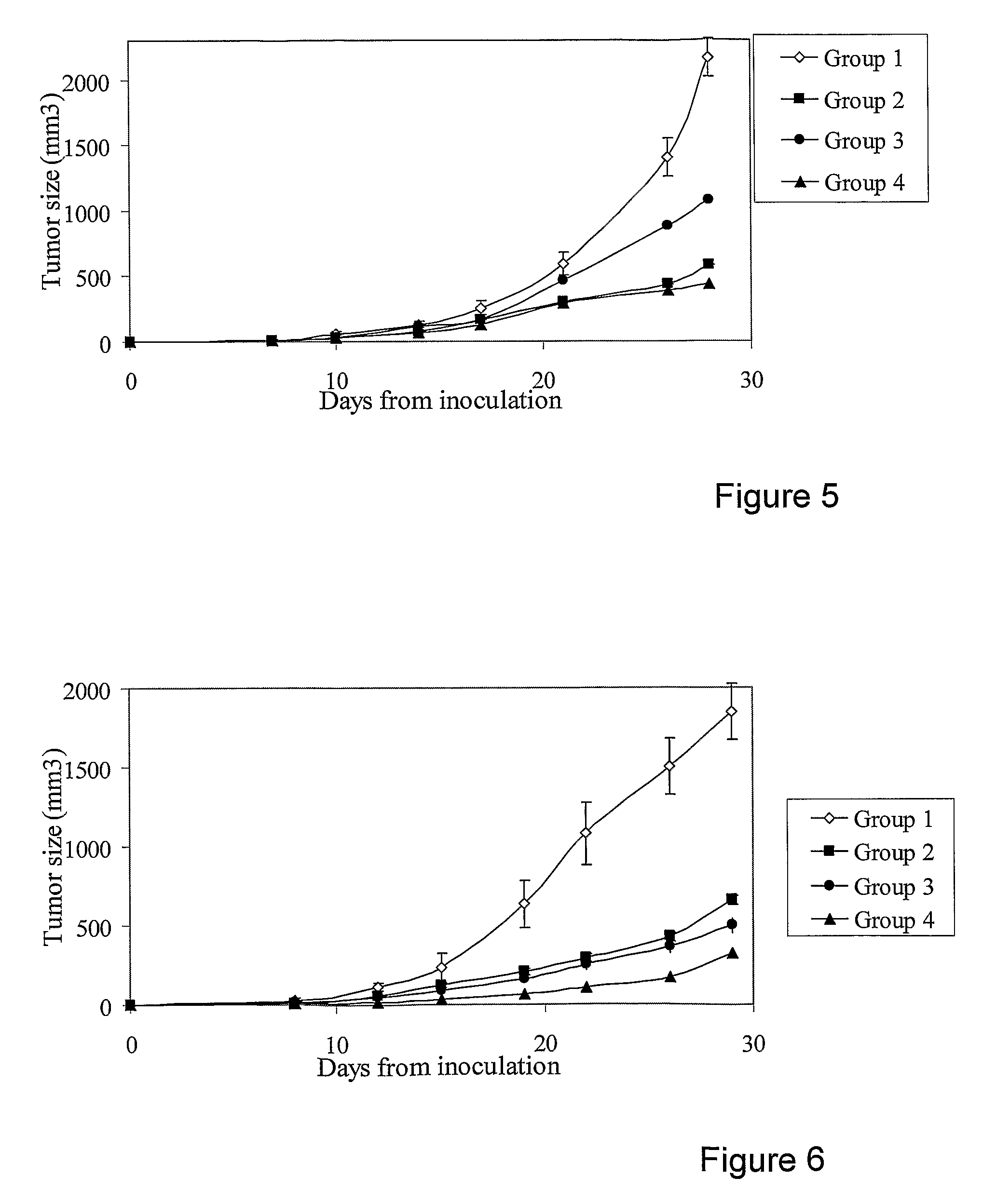Anti-cancer therapy comprising an H2-blocker, at least one antiinflammatory agent and a cytotoxic agent
a technology of cytotoxic agent and anti-cancer therapy, which is applied in the direction of biocide, drug composition, active ingredients of phosphorous compound, etc., can solve the problems of limited success in treating cancers with a single agent, not killing all cancer cells in patients, and a deadly disease of cancer, so as to achieve significant anti-tumor
- Summary
- Abstract
- Description
- Claims
- Application Information
AI Technical Summary
Benefits of technology
Problems solved by technology
Method used
Image
Examples
example 1
[0139]Table 1 describes the pharmaceutical compositions administered to Groups 1 to 5:
[0140]
TABLE 1Pharmaceutical Compositions of Example 1GroupComponent &Group 1dosage(Control)Group 2Group 3Group 4Group 5Vehicle+++++Cimetidine+++20 mg / Kg all weekSulfasalazine++150 mg / Kg onnon-cytotoxic days,50 mg / Kg on cytotoxicdaysDiclofenac++++30 mg / Kg on cytotoxicdaysCTX+++60 mg / Kg on cytotoxicdays
[0141]This experiment was conducted in order to show the contribution of either cimetidine by itself or together with sulfasalazine to the anti-tumor activity when added to the combination of CTX and diclofenac. The results are depicted in FIG. 1. The pharmaceutical composition comprising cimetidine (Group 4) showed a more pronounced anti-tumor effect demonstrated by the reduction in tumor size, compared to the anti-tumor effect of the pharmaceutical compositions comprising only CTX and diclofenac (Group 3) or a composition comprising diclofenac, sulfasalazine and cymetidine (Group 2). The addition of ...
example 2
[0142]Table 2 describes the pharmaceutical compositions administered to Groups 1 to 4.
[0143]
TABLE 2Pharmaceutical Compositions of Example 2GroupGroup 1Component & dosage(Control)Group 2Group 3Group 4Vehicle++++Levamisole++12 mg / Kg on non-cytotoxic daysCimetidine++20 mg / Kg all week
[0144]The results as depicted in FIG. 2, show that neither levamisole (Group 2), nor cimetidine (Group 3), nor their combination (Group 4) had any significant effect on tumor growth.
example 3
[0145]Table 3 descries the pharmaceutical compositions administered to Groups 1 to 3:
[0146]
TABLE 3Pharmaceutical Compositions of Example 3.GroupGroup 1Component & dosage(Control)Group 2Group 3Vehicle+++Levamisole+12 mg / Kg on non-cytotoxic daysCimetidine+20 mg / Kg all weekMenadione++27.5 mg / Kg all weekSulfasalazine++150 mg / Kg on non-cytotoxic days,50 mg / Kg on cytotoxic daysDiclofenac++30 mg / Kg on cytotoxic daysCTX++60 mg / Kg on cytotoxic days
[0147]FIG. 3 shows a significant reduction in tumor size upon the addition of cimetidine and levamisole to pharmaceutical compositions comprising combinations of CTX, diclofenac, sulfasalazine and menadione (Group 3 vs. Group 2, in FIG. 3) (as compared to control group). A significant reduction in tumor size was observed for Group 2 and Group 3. Hence, the concomitant addition of cimetidine and levamisole enhanced the anti-tumor activity of pharmaceutical compositions comprising combinations of CTX, diclofenac, sulfasalazine and menadione.
PUM
| Property | Measurement | Unit |
|---|---|---|
| volume | aaaaa | aaaaa |
| body weight | aaaaa | aaaaa |
| pharmaceutical composition | aaaaa | aaaaa |
Abstract
Description
Claims
Application Information
 Login to View More
Login to View More - R&D
- Intellectual Property
- Life Sciences
- Materials
- Tech Scout
- Unparalleled Data Quality
- Higher Quality Content
- 60% Fewer Hallucinations
Browse by: Latest US Patents, China's latest patents, Technical Efficacy Thesaurus, Application Domain, Technology Topic, Popular Technical Reports.
© 2025 PatSnap. All rights reserved.Legal|Privacy policy|Modern Slavery Act Transparency Statement|Sitemap|About US| Contact US: help@patsnap.com



